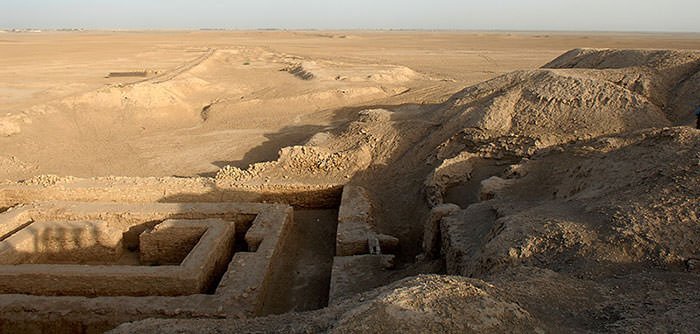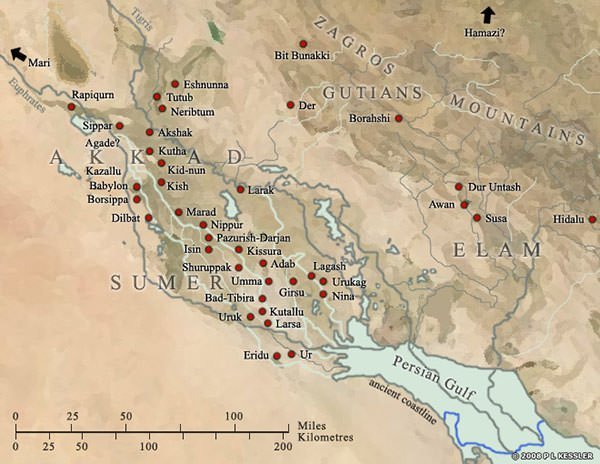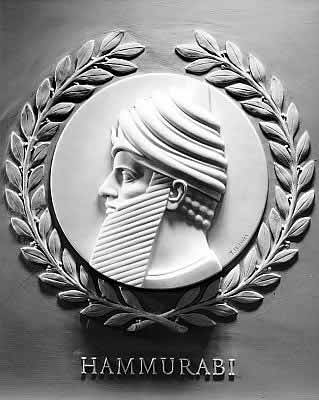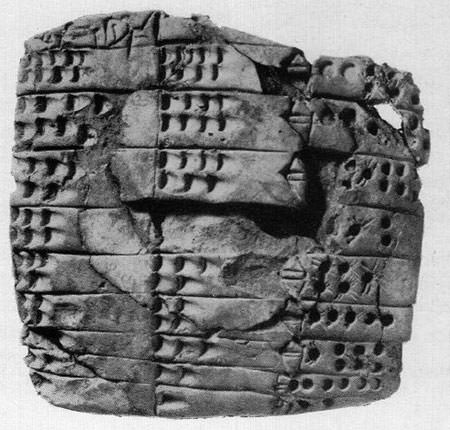Sumer was the first urban civilization in ancient Mesopotamia, the area of the Tigris–Euphrates river system. It was located in modern-day southern Iraq and at its peak the population of the area is estimated to be between 0.8 million to 1.5 million. The Sumerian civilization flourished for thousands of years before it lost its identity after being conquered by the Amorites. Sumerians are famous for many achievements which include their writing system known as the cuneiform script, and the first known law code in history. Know about the history, famous cities and kings, decline, and achievements of Sumer through these 10 interesting facts.
#1 THE SUMERIAN CITY OF ERIDU IS ARGUABLY THE OLDEST CITY IN THE WORLD
Located in modern-day southern Iraq, Sumer was the first civilization in Mesopotamia and arguably the earliest civilization in the world. The Sumerian city of Eridu is regarded as the first city in the world. It was founded around 5400 BC on the coast of the Persian Gulf in southern Mesopotamia. Prehistoric people known as Ubaidians are believed to be the first civilizing force in Sumer, draining the marshes for agriculture, developing trade and establishing industries. Archaeological evidence suggests that by late 4th millennium BC, Sumer was divided into around a dozen independent city-states centered on a temple dedicated to a patron god or goddess, and ruled by a priestly governor or a king.

#2 SUMERIAN CITY URUK BECAME MOST LIKELY THE LARGEST CITY IN THE WORLD
The most prominent city of Sumer was Uruk, which is situated around 30 km east of the modern city of Samawah in Iraq. Among the first cities in the region, it played a leading role in urbanization and state formation in Sumer during what is known as the Uruk period (4000–3200 BC). Uruk’s growth made it the largest Sumerian settlement, in both population and area. At its height, around 2900 BC, it had a population between 40,000 and 80,000 living in 6 km2 of walled area. This made Uruk most likely the largest city in the world at the time. It lost its prime importance around 2000 BC but continued to be inhabited till it was finally abandoned shortly before the Muslim conquest of Persia in 651 AD.

#3 SUMERIAN KING EANNATUM FOUNDED ONE OF THE FIRST KNOWN EMPIRES IN HISTORY
In 25th century BC, Eannatum, king of the Sumerian city of Lagash, began a military campaign to annex the various city states. He eventually conquered all of Sumer and also extended his influence beyond its boundaries. The empire of Eannatum is one of the first verifiable empires in history. Akkad was a city in northern Mesopotamia. Sargon of Akkad, also known as Sargon the Great, founded the Akkadian Empire and conquered Sumer around 2270 BC. Akkadian Empire lasted for around a hundred years in Sumer after which it was defeated by the Gutian invaders, who were termed barbarians by Sumerians. Gutian dynasty ruled Sumer for roughly a century.

#4 SUMER LOST ITS SEPARATE IDENTITY AFTER IT WAS CONQUERED BY THE AMORITES
The end of the Gutian period is marked by accession of native Sumerian ruler Ur-Nammu in 2047 BC. This led to a brief Sumerian renaissance which was ended in 1940 BC due to the invasions by the Amorites, who belonged to Syria. Independent Amorite states existed till Hammurabi, the famous Amorite king of the city-state of Babylon, united all of Mesopotamia under his rule in the second half of 18th century BC. South Mesopotamia came to be known as Babylonia as the Sumerians were eventually absorbed into the Assyro-Babylonian population. Though they lost their separate identity, Sumerians bequeathed many aspects of their culture to their successors in the region.

#5 SUMERIAN LANGUAGE REMAINED IN LITERARY USE TILL FIRST CENTURY AD
Semitic languages are a branch of the Afroasiatic languages which originated in the Middle East. Akkadian, which gets its name from the city of Akkad, is the earliest attested Semitic language. The Sumerian language is regarded as a language isolate in linguistics as it belongs to no known language family. In 3rd millennium BC, there was a close cultural symbiosis between Sumerians and Akkadians which included widespread bilingualism. The languages thus deeply influenced each other. From 2100 BC to 1700 BC, soil salinity in Sumer heavily affected agricultural productivity leading to a decline of an estimated three fifth of the region’s population. This weakened areas where Sumerian was spoken. Akkadian gradually replaced Sumerian as the spoken language though Sumerian continued to be used for ceremonial and literary purposes till 1st century AD.
#6 SUMER’S CUNEIFORM SCRIPT IS CONSIDERED ITS GREATEST ACHIEVEMENT
The most famous achievement of Sumer is invention of the cuneiform script around 3400 BC. Cuneiform is a Latin term meaning “wedge-shaped”. Sumerian writing developed from pictograms but grew in sophistication and ultimately became a full-fledged writing system that could be used for creating pieces of literature as well as prayers and laws. Though it is not the oldest example of writing, cuneiform script is considered a great milestone in human history. It was used for over 3,500 years; and was adapted for writing multiple languages including Akkadian, Hittite and Urartian. Knowledge of how to read cuneiform was lost by 2nd century AD as it was replaced by alphabetic writing. It was re-deciphered in the 19th century with the help of the Behistun Inscription, which consisted of identical text in the 3 official languages of the Persian Empire: Old Persian, Akkadian and Elamite.

#7 THERE IS A SUMERIAN FLOOD MYTH AKIN TO THE GENESIS FLOOD NARRATIVE IN THE BIBLE
In Sumerian writing there is a reference to a great flood. According to the Sumerian flood myth, the Gods decide to send a flood to destroy mankind. The deity Enki however warns Ziusudra, the ruler of Shuruppak, to build a large boat. A terrible storm rocks the huge boat for 7 days and 7 nights, and then Utu (the Sun god) appears. After the flood is over the animals leave the ship and the Gods give Ziusudra eternal life for “preserving the animals and the seed of mankind”. There are several other flood myths with many similarities to the Sumerian account like the story of the Hindu king Manu in the Matsya Purana; and most famously the Genesis flood narrative in the Bible. There have been various theories to explain these flood myths including a hypothesis that a meteor crashed into the Indian Ocean around 3000–2800 BC generating a mega-tsunami that flooded coastal lands.

#8 GILGAMESH FEATURES IN THE SUMERIAN KING LIST
One of the great sources of information on ancient Mesopotamia is the Sumerian King List (SKL), which lists the kings of Sumer and their supposed reign lengths. SKL divides the history of Sumer into “pre-Flood” (antediluvian) and “post-Flood” (postdiluvian) periods. The antediluvian kings have enormous lifespans, as long as 43,200 years, while the lifespans of post-flood kings are much reduced. The last ruler before the flood is Ziusudra with a reign of 3600 years. SKL lists only one female ruler, Kubaba, who reigned over the city-state of Kish from around 2500 BC. Gilgamesh, the hero of the famous Epic of Gilgamesh, is also listed in the SKL. He is said to have ruled Uruk for 126 years. Archaeologists have found inscriptions that credit Gilgamesh with building Uruk’s massive defensive walls and restoring a temple. He was most probably an actual king who later became associated with legendary deeds.

#9 THE OLDEST LAW CODE YET DISCOVERED IS THE CODE OF UR-NAMMU
Ur-Nammu was a Sumerian king of the city-state Ur who reigned from around 2047 to 2030 BC. He is famous for his legal code, the Code of Ur-Nammu, which is the oldest known law code yet discovered. The code gives us a glimpse of societal structure in late Sumer. Beneath the lugal (king), all members of society belonged to one of two basic strata: “lu” or free person, and the slave (male, arad; female, geme). The Sumerian city-states were involved in near-constant wars through its history. This led to several advancements in military technology and techniques. The earliest known depiction of a phalanx-like formation is in a Sumerian stele from 25th century BC. The phalanx formation is a famous military formation associated with Ancient Greek warfare. Also, since Sumerian cities were surrounded by defensive walls, they might have invented siege warfare.

#10 THE SUMERIANS USED A BASE-60 SYSTEM WHICH SURVIVES IN MEASUREMENT OF TIME
Like modern mathematics uses the decimal system based on the number 10, the Sumerians mainly used a sexigesimal structure that was based around groupings of 60. The Sumerian base-60 system eventually fell out of use for most purposes but it still survives in the measurements of both the hour and the minute. The Sumerians were among world’s first astronomers. They mapped stars into sets of constellations and were aware of the five planets that are easily visible to the naked eye. The oldest known multiplication tables were used by the Sumerians. The period 2700–2300 BC saw the first appearance of the Sumerian abacus, which could perform the operations of addition and subtraction. The Sumerians were the first to use a place value numeral system; and the first to find the area of a triangle and the volume of a cube.

SUMERIAN BEER
The Sumerians were one of the first known beer drinking societies. Archaeologists have found evidence of their beer-making dating back to 4th millennium BC. They brewed multiple kinds of beer consisting of wheat, barley, and mixed grains with the barley-based concoction being their preferred ale. Beer brewing was very important to the Sumerians and they even had a goddess of beer called Ninkasi. The brewing techniques of the Sumerians remain a mystery.


Great. It helps me a lot in my tasks about old civilization.
Happy to help.
This is kinda helpful for my project, thanks internet
Thank Learnodo, the great wizard of knowledge:)
this stuff is cool, I’m doing a report on ancient Sumer.
Thank you for these important information about the Sumerians
You’re welcome.